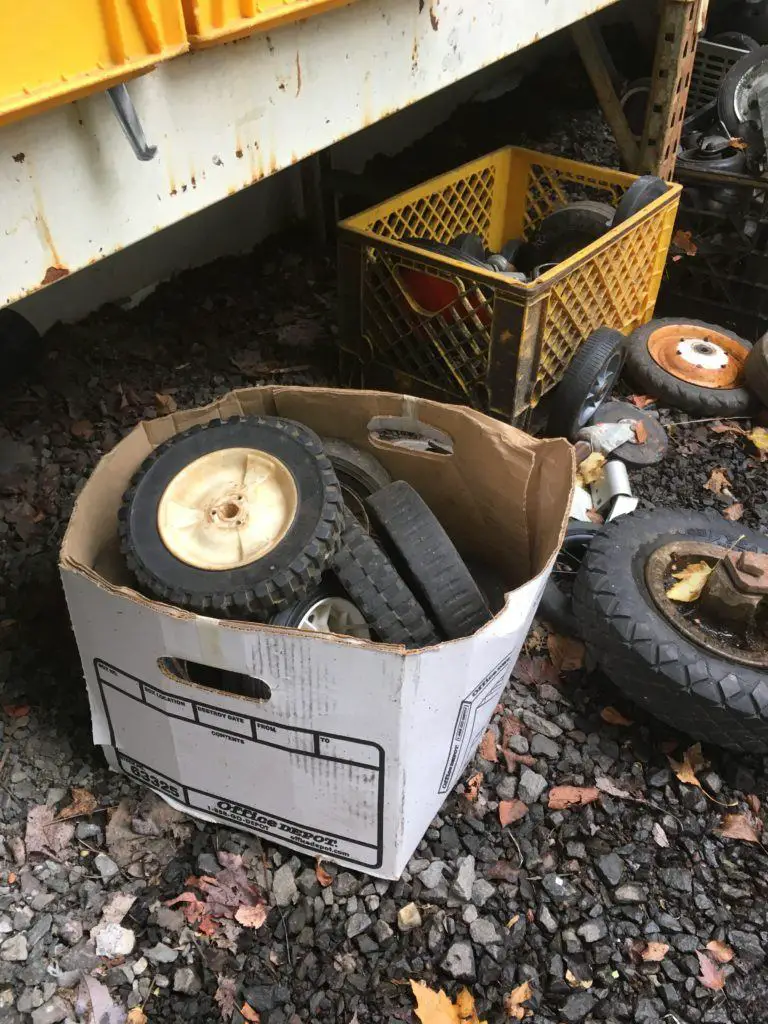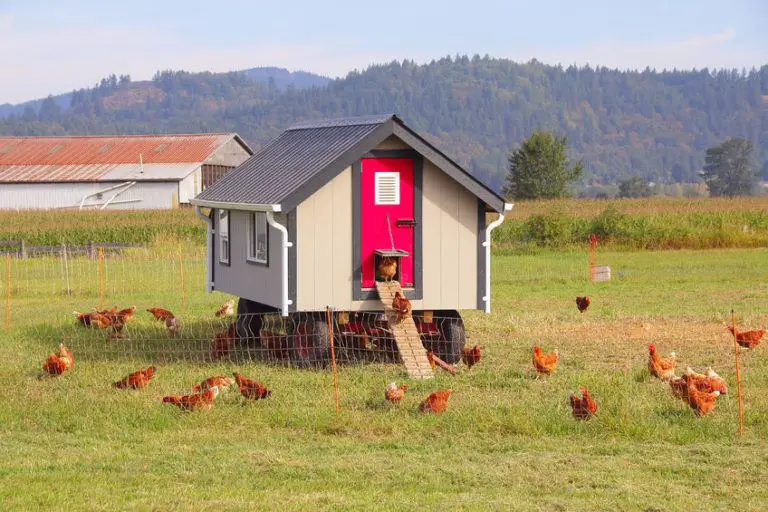Gutters On The Chicken Coop – Is It Really Necessary?
If you like geeking out on your chicken coop, like we do, then this article may be for you. We have always had a lean-to style roof on our coop, letting the rainwater run off onto the ground. But we got to thinking, what if we could save some of that water? We could, by adding gutters on the chicken coop.
We live in the pacific NW so we get A LOT of rainfall each winter. Then in the Summer, it’s cork dry, and the ground is like concrete. So it makes a lot of sense to have as much water saved up as possible to water the flock, or our garden.
In this article we’ll discuss the ins and outs of adding a gutter onto the coop, and provide you with enough information so you can decide if it’s the right decision for you too. Okay, let’s get at it!
Why Add Rain Gutters On The Chicken Coop?
Adding gutters may seem like a pain. It’s one more thing to do in your already busy life! But the trade off can be worth in later on when you’re using the water for your flock or garden. Below are a few reasons gutters can be useful on your coop.
Convenience – Having a go-to water supply can be very handy. If you’re daily routine with your chooks consists of adding fresh water to their waterers, having a large supply of excess water to draw from can save a lot of time. If you set it up to automate, it’s even better!
Economical – If currently paying for water, having a few barrels of excess rain water can save some money on water costs. Use those gutters to collect rain water into a 50 gallon drum, or larger water storage container.
Environmentally Friendly – It takes no electricity to run a pump to gather this water. It’s a great way to use a FREE resource that falls from the sky.
It’s Fun – Finding creative new ways to improve your coop (and flock) is fun, especially when it saves money.
Downsides Of Adding Gutters On Your Chicken Coop
We just discussed many ways adding gutters on your coop can be helpful. But we also wanted to look at potential downsides too.
Upfront Expense – Unless you find some quality used gutters or, if you’re really lucky, some free ones, you will have to pay for gutters upfront. On top of that, if you’re collecting the rainwater in barrels, you’ll have to pay for those as well. Although the cost of either of these items isn’t exorbitant, it’s something to keep in mind. One way to save some money on gutters and barrels or other water collection tanks is be searching for some ‘gently used’ ones on Craigslist, OfferUp, Nextdoor, or other classified listing sites.
Time to Research and Install – The gutters won’t install themselves. It will take a few searches in your favorite web browser or on Youtube to figure out how to install them correctly.
Doesn’t Look As Nice – Looking at gutters on a house doesn’t seem like a big deal. It’s like you hardly notice them. But on a chicken coop they stand out a bit more. For some, the look isn’t what they like. Try to get a good idea if you can live with (and grow to like) the look of gutters on your coop.
Ongoing Maintenance – Just like gutters on your house need maintenance, the gutters on your chicken coop will too. Considering the size of your coop compared to the house, it probably won’t take too long to clean them out and inspect them, make necessary repairs when needed, etc.
How To Add Rain Gutters On The Chicken Coop
The installation process of adding gutters on your coop is really no different than that of installing them on your home. Thankfully, you’ll be using far less materials! Below we talk about what to keep in mind when attaching gutters to your chicken coop.
Slope
Gutters cannot be installed completely level or the water will not drain correctly. Goasher.com suggests the following rule of thumb:
“A good rule of thumb for a gutter slope is that you want at least a quarter inch of slope for every 10 feet of gutters. “
Goasher.com
They discuss the topic in more detail on their website.
Hardware
Like a home, the gutters can be attached to the eaves, often nailing it to the fascia board using hangers and ferrules.
There are many different types of hangers, and you can read more about which type will work beset for you in this article. The hangers should not be spaced more than 36 inches apart.
Other Things To Keep In Mind…
Since you’re installing them on your chicken coop, the process may be a bit different and likely not as technical. As long as you have them positioned to the coop below the edge of the roofline to catch the water, you’re probably just fine.
An important thing to watch out for is making sure the water doesn’t seep behind or between the gutter and the fascia board. That trapped water will lead to a rotten fascia board. With proper installation, you shouldn’t have any issues.
Below is a video of how one coop owner installed his gutters.
How To Catch And Hold The Water
Once your gutters are up, you’ll need to devise a way to hold all that water. As we mentioned earlier, rain barrels or other collection tanks will work great and are readily available.
Rain Barrels
These are a very common option, and having one, two, or more on hand to catch the water is a great plan. Some of the barrels come pre-made with a spigot attached to the bottom of the barrel. These are ideal because you can attach a hose or PVC piping to it, which can then feed into your chicken’s watering system. you can find 55 gallon barrels at your local farm store.
We’ve also found them on Craigslist or at farm stores! Below is a picture of a 55 gallon water barrel at Amazon.

The beauty of having 55 gallons of water is that it will last a long time, depending on the number of chickens in your flock of course. These barrels are made of steel or HDPE (high-density polyethylene), a type of durable plastic, a material that does not easily allow mold to gather inside.
Large Storage Tank
If you want to funnel the water into something larger than 55 gallon barrels, there are many varieties out there which will work nicely. They are made of polyethylene or steel.
These tanks come in many different capacities, holding sometimes hundreds of gallons of water. Below is a picture of a 125 gallon tank, available at Amazon but there are larger and smaller tanks available too.

However, for a flock of chickens, this large of a tank may not be entirely necessary since you may not use that much water over the dry summer months. But if you’re supplying water to your garden, chickens, other farm animals, cats, dogs, etc. well that’s a different story!
You’ll have to decide what the water will be used for and how much you’ll need.
How to Get the Water to the Chickens
Okay, so you’ve got the gutters and the rain catching containers. Now to funnel it to your chickens!
There are many ways to make this happen, which we won’t go into great detail for this article. But for a classic example of one such set up, see the Living Off Grid blog. Their set up includes a gutter to rain barrel, and PVC piping to automatic water nipples. Below is a picture and link to the article.

The automatic nipple waterers work well and you can use them in this type of PVC set up or, if you’re like us, funnel it to a 5 gallon bucket with the nipples on the under side of it. Click here to see our watering set up.
If you want to really simplify thigs, just add the nipples directly to the bottom of the barrel. That way, you eliminate the need for PVC pipes, fittings, etc. An example of this type of system can be seen below.
How Much Rain Water Will You Really Get?
So once the system is set up, you can roughly figure out how much water you can expect to collect, depending on the roof dimensions and how much rainfall you get per year.
An excellent article and handy rainfall collection calculator can be found here! If you really get excited about catching water from your coop, you can easily add a similar set up from your house’s roof and gutters. Because of the large surface area, you could get a lot of water very quickly, depending on the amount of rainfall you get in your demographic region.
Closing Thoughts
We hope you’ve enjoyed learning about the ‘ins and outs’ of adding gutters on your coop and whether this seems like a viable solution for your flock and/or farm.
Installing gutters is not a difficult job and the benefits for your flock can be incredible. You can provide a source of fresh, natural water for your flock without using electricity. If collecting the rainwater in a barrel and automating the process, you have a win-win situation!
We hope the information has been helpful to you. Happy ‘Chickening.’







